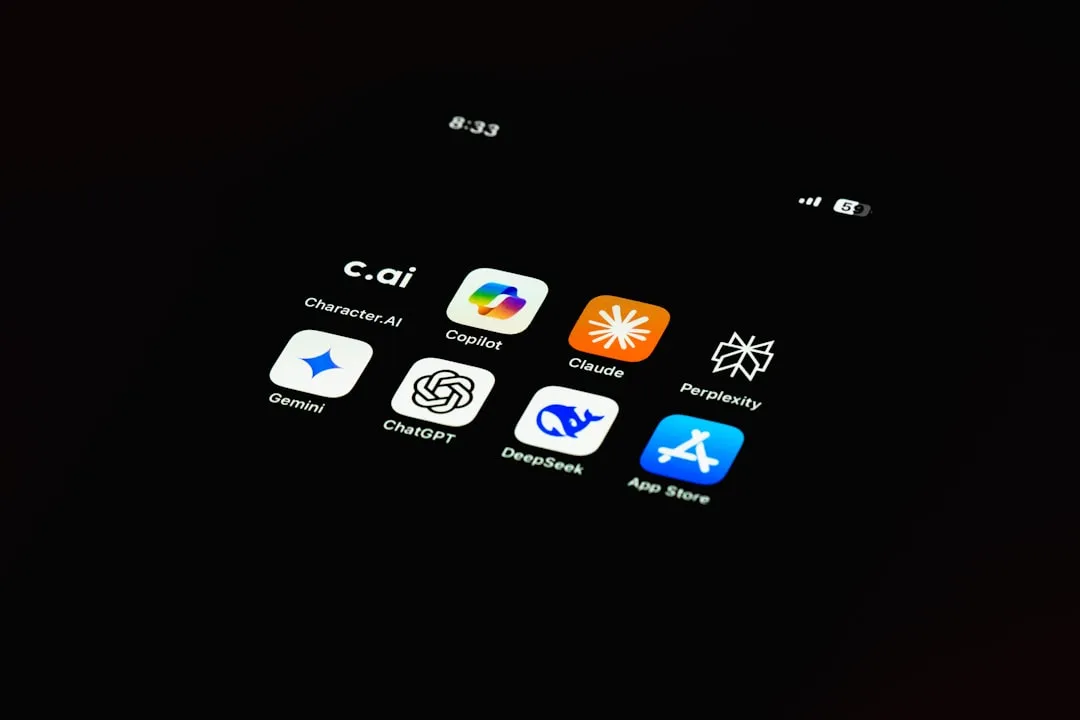
Thanks to numerous smartwatch deals this holiday season, many people are receiving their first one. But what exactly can they do? In regards to fitness, quite a lot. With a growing list of sensors and software updates, these small devices can be the very thing you need to ultimately reach your fitness goals.
While some features are specific to certain smartwatches, we are going to focus on ones found on all watches. Nowadays, many fitness bands and smartwatches share the same features. Plus, that means instead of harping on which watch is better, we can just show you why you'd actually want to wear the watch in the first place.
1. Know Your Resting Heart Rate
To efficiently workout to improve your health, you need to monitor your heart rate. Your heart rate acts as a guide to your overall health, as it indicates how hard it has to work to deliver oxygen, nutrients, and other materials around the body. This starts with your resting heart rate.
Your resting heart rate is the number of times your heart beats per minute while at rest. For a healthy adult, it ranges between 50 to 70 beats. As you improve your health, this number will decrease.
Besides showing how healthy you are, having a watch monitor your resting heart rate can also indicate if something is wrong. For example, if your heart falls outside of the normal range at any time, some smartwatches will alert you. With this information, you can share it with your doctor to perform further testing, potentially learning of a problem before you have symptoms.
2. Continuously Track Your Heart Rate
Besides knowing your heart rate at any given point, you can track its changes during physical activities such as workouts. Most smartwatches will present this information in graph form to make it easier to monitor.
It's good to know how high your heart rate spikes during exercises. While an increase is normal, there is a limit. The number depends on your age, but around around 160 bpm is where you should be concerned. Not only do smartwatches let you see any spikes, but many will alert you when your heart rate is too high (or even too low, for that matter). The Apple Watch can even tell you if you have irregular heartbeats, which can be a sign of a heart attack that can happen at any time.
When working out, most doctors and trainers will tell you to aim for a target heart rate of around 55–85% of your maximum heart rate. Sustaining this level of intensity will improve your cardiovascular health while not over-stressing your body. If you are not hitting this level, this means you are likely not working out hard enough.
3. Stay Motivated with Music
With some smartwatches and fitness trackers, you can sync music, podcasts, and audiobooks to the device so that you don't need your smartphone nearby to listen. This can be helpful during runs and in the gym, as you have one less thing to carry and remove a lot of the distractions that a smartphone brings.
Even if the watch doesn't let you play media without a smartphone, you'll still benefit from the ability to switch tracks, pause, or change volume levels right from your wrist.
4. Maximize Your Recovery
Equally important as your workout is recovery, which is primarily accomplished when you sleep. However, not all sleep is created equal. As you rest, your body goes through phases, each of which helps assist in recovery from the prior day.
The most important of sleep is stage known as rapid eye movement, or REM. Here is where your mind recovers from the previous 16 (or more) hours it was active the day before. This stage is the shortest period of sleep, but is one of the most important ,as a sluggish mind will be unable to drive a body to its full potential.
Then there are the other stages of sleep where your muscle recovers. Without spending the necessary hours each night in these stages, you will remain sore, unable to involve those muscles again in exercises the next day.
But as you know, just heading to bed isn't enough. With so many smart devices around us, streaming services to choose from, games to play, many of us don't get a good night's rest. With smartwatches, you can change that.
Smartwatches let you track how long you spend in each sleep stage. With this information, you can make changes to your bedtime routine to maximize recovery, such as going to bed earlier or adjusting room temperature. And for even more help, some smartwatches have an SPO2 sensor, a device that can measure blood oxygen levels to identify if you have sleep apnea.
5. Set Up Reminders to Stay Active All Day
Improving your health should be an all-day affair. However, with many jobs having us stationary for 8+ hours each day, it's easy to be inactive for most of the day. Smartwatches let you set up reminders to urge you to keep moving throughout the day. For example, the Fitbit Versa 2 will vibrate at the 50-minute mark of each hour if you haven't walked enough steps.
6. Set Goals & Accomplish Them
You can also set a wide array of fitness goals that can be tracked using the smartwatch. You can integrate other smart devices into your watch's fitness service and monitor all your health related stats right on your wrist, such as your weight, how long you've been standing, and caloric intake. Like reminders, the watch will alert you when you have and haven't completed a goal for the day, so you don't fall off track.
7. Get Competitive with Daily Challenges
In the world of fitness, competition is a great motivator. With some smartwatches, you can compete against your family and friends to help both you and your loved ones work harder. You can set challenges for one day, the work week, or the weekend. These challenges can include number of steps or other activities. At the end of the competition, participants are ranked, and the winner earns an award. Usually, the award is arbitrary, but it's often the fire someone needs to really push themselves toward their fitness goals.
8. Don't Just Swim, Swim with Purpose
Because of the high demand for oxygen, swimming makes for a great aerobic activity. And because of the limited stress, it works as anaerobic exercise, allowing it to build muscle strength as well. It is low impact, so even those with prior injuries can still perform the exercise. However, unlike other forms of cardio, it is hard to track.
With water-resistant smartwatches such as the ones manufactured by Fitbit, you can track your progress in the pool. The watch does a great job of monitoring how fast you swam, how far, and your intensity level.
9. Create Better Run Paths
Many smartwatches now come with a GPS sensor to track your movements. Your location data is used to create a map of your runs, walks, and other outdoor activities, which you can view later. With this data, you can plot running and walking courses for future runs. It also keeps you safer during late night or early morning jogs since your location is being monitored at all times.
10. Track Your Exercises (Sometimes Automatically)
It's almost impossible to track your cardio expenditure during a workout accurately. But with smartwatches, you can track this information and use it to determine your intensity during fitness activities.
Smartwatches can measure your total calories, beats per minute, distance traveled, numbers of steps, and more. By comparing this information to prior days, you can see if you were slacking in your workout. Did you travel further yesterday or burn more calories? Then push yourself hard in the future, aiming to match the better day and avoid less intense days. This information can also be shared with your doctor or trainer to create a personalized plan tailored to what you can do.
In some newer watches, some activities can be detected automatically, saving you the step of having to remember to turn on the activity tracking for the exercise. After a few minutes of performing the exercise, the watch will ask you if you want to track this activity. Select "Yes" and your watch will begin tracking. Some watches will even add the data from the few minutes before it asked so you get an accurate representation of your entire workout.
11. Use More Stairs & Stand More
If you want to burn more calories, using stairs can make all the difference. By moving on both the x and y axes, you're able to burn calories as if you were moving twice as fast on a flat surface. Plus, working out shouldn't be limited to just a session before or after work. Instead, you should be moving throughout the day, keeping your body warm, improving your health, and reducing the chance of injuries.
Smartwatches can measure stairs climbed thanks to their altimeters. Because stairs burn more calories than regular steps, just having a number in mind that you want to beat can motivate you to burn more calories.
Using the accelerometer, a smartwatch can also detect changes in arm position and the swinging of your arms as you move to determine if you are sitting down or standing up. Because standing burns more calories than sitting (among other health benefits), you can set a goal to stand x minutes each hour and be alerted when you did or didn't meet this goal.
12. Protect Yourself in Case of Emergency
With smartwatches such as Apple Watch Series 4 and higher, you have protection from falls while you're out running. With the fall detection feature, your smartwatch will detect when take a hard spill. It will buzz your wrist, sound an alarm, and display a message with the option of calling emergency services. If you're fine, you can select "I'm OK" to dismiss the alert.
However, if you are immobile for a minute, it will automatically call paramedics and alert them of your location using the GPS sensor. It will also send a message to your emergency contacts, which you can add to your Medical ID. While you can turn this feature off, Apple will automatically enable this feature if you set your age to 65 or older.
13. Get Access to Exclusive Fitness Apps
One fact that is often overlooked is that smartwatches use their own mobile operating system, separate from the one found on your smartphone. These operating systems have their own app stores, housing apps designed explicitly for this form factor. These include fitness apps with interfaces made for the smaller watch screen.
Whether you are using a smartwatch running watchOS (Apple Watch), wearOS (Android-based smartwatches), or any of the other OEMs' operating systems, you will find fitness apps designed for the watch form factor to help improve your workout. There are meditation apps to help you refocus, apps to show you what to do in the gym, running apps to keep motivated, and so much more.
Finding the one that fits your fitness goals takes a bit of exploring, but will dramatically improve your workout. Like your smartphone, while the default apps and sensors do a great job of helping in a variety of things (including workouts), it is with third-party apps where you truly get the most personalized experience.
This article was produced during Gadget Hacks' annual Health & Fitness special coverage. Read all of the Health & Fitness series.
Cover image via CNET/YouTube
































Comments
Be the first, drop a comment!